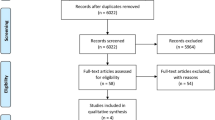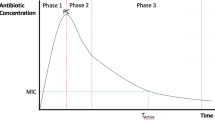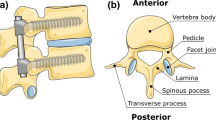Abstract
Purpose
The use of antibiotic-loaded bone cement (ALBC) has a range of indications for use in orthopaedics. It has the advantage of delivering high loads of antibiotics to a targeted site, thereby avoiding the side effects associated with systemic administration. However, there is concern that the use of ALBC may precipitate the development of antibiotic-resistant bacteria.
Methods
This review focuses on (1) the published research using both animal and human models examining the association between ALBC and the induction of microbial resistance (2) the mechanisms by which antimicrobial resistance develop (3) the research pertaining to specific classes of antibiotics commonly used in orthopaedic practice (4) the recent developments in calcium sulphate beads, nanoparticles and chitosan, as alternative antimicrobial treatments for periprosthetic joint infections.
Conclusion
The literature for and against a link between ALBC and the development of microbiological resistance is reviewed and presented. It is concluded that further research is needed to develop a defined set of indications for the use of ALBC in the management of periprosthetic joint infection. In addition, further research into alternative antimicrobial therapies in this area should be encouraged.
Similar content being viewed by others
Abbreviations
- A-CSs:
-
Antibiotic-loaded cement spacers
- ALBC:
-
Antibiotic-loaded bone cement
- HACC:
-
Hydroxypropyltrimethy ammonium chloride chitosan
- IV:
-
Intravenous
- MRSA:
-
Methicillin-resistant Staphylococcus aureus
- PJI:
-
Periprosthetic joint infection
- PMMA:
-
Polymethylmethacrylate
- SIGN:
-
Scottish intercollegiate guidelines network
References
Anagnostakos K, Hitzler P, Pape D, Kohn D, Kelm J (2009) Persistence of bacterial growth on antibiotic-loaded beads: is it actually a problem? Acta Orthop Scand 79(2):302–307
Arciola CR, Campoccia D, Montanaro L (2002) Effects on antibiotic resistance of Staphylococcus epidermidis following adhesion to polymethylmethacrylate and to silicone surfaces. Biomaterials 23(1):495–502
Arizono T, Oga M, Sugioka Y (1992) Increased resistance of bacteria after adherence to polymethylmethacrylate: an in vitro study. Acta Orthop Scand 63:661–664
Chotanaphuti T, Surijamorn P, Luenam S, Ongnamthip P (2008) In vitro antimicrobial activity of phramongkutklao hydroxyapatite antibiotic pellet. J Med Assoc Thai 91:1868–1872
Corona PS, Espinal L, Rodríguez-Pardo D, Pigrau C, Larrosa N, Flores X (2014) Antibiotic susceptibility in gram-positive chronic joint arthroplasty infections: increased aminoglycoside resistance rate in patients with prior aminoglycoside-impregnated cement spacer use. J Arthroplasty 29:1617–1621
Di Martino A, Sittinger M, Risbud MV (2005) Chitosan: a versatile biopolymer for orthopaedic tissue-engineering. Biomaterials 26(30):5983–5990
Drosos GI, Babourda EC, Ververidis A, Kakagia D, Verettas DA (2012) Calcium sulfate cement in contained traumatic metaphyseal bone defects. Surg Technol Int 22:313–319
Dunbar MJ (2009) Antibiotic bone cements: their use in routine primary total joint arthroplasty is justified. Orthopedics 32(9):251–256
Enescu D, Olteanu CE (2008) Functionalized chitosan and its use in pharmaceutical, biomedical, and biotechnological research. Chem Eng Commun 195(10):1269–1291
Engesæter L, Lie SA, Espehaug B, Furnes O, Vollset SE, Havelin LI (2003) Antibiotic prophylaxis in total hip arthroplasty Effects of antibiotic prophylaxis systemically and in bone cement on the revision rate of 22,170 primary hip replacements followed 0–14 years in the Norwegian Arthroplasty Register. Acta Orthop Scand 74(6):644–651
Espehaug B, Engesaeter LB, Vollset SE, Havelin LI, Langeland N (1997) Antibiotic prophylaxis in total hip arthroplasty: review of 10,905 primary cemented total hip replacements reported to the Norwegian arthroplasty register, 1987 to 1995. J Bone Joint Surg Br 79:590–595
Fletcher MD, Spencer RF, Langkamer VG, Lovering AM (2004) Gentamicin Concentrations in Diagnostic Aspirates from 25 Patients with Hip and Knee Arthroplasties. Acta Orthop Scand 75(2):173–176
Gristina AG, Shibata Y, Giridhar G, Kreger A, Myrvik QN (1994) The glycocalyx, biofilm, microbes, and resistant infection. Semin Arthroplasty 5:160–170
Hansen EN, Adeli B, Kenyon R, Parvizi J (2014) Routine use of antibiotic laden bone cement for primary total knee arthroplasty: impact on infecting microbial patterns and resistance profiles. J Arthroplasty 29(6):1123–1127
Hendriks JG, Neut D, Van Horn JR, Van der Mei HC, Busscher HJ (2005) Bacterial survival in the interfacial gap in gentamicin-loaded acrylic bone cements. Bone Joint J 87(2):272–276
Hope PG, Kristinsson KG, Normal P, Elson RA (1989) Deep infection of cemented total hip arthroplasties caused by coagulase-negative staphylococci. Bone Joint J 71(5):851–855
Howlin RP, Brayford MJ, Webb JS, Cooper JJ, Aiken SS, Stoodley P (2015) Antibiotic-loaded synthetic calcium sulfate beads for prevention of bacterial colonization and biofilm formation in periprosthetic infections. Antimicrob Agents Chemother 59(1):111–120
Kendall RW, Duncan CP, Beauchamp CP (1995) Bacterial growth on antibiotic-loaded acrylic cement: a prospective in vivo retrieval study. J Arthroplasty 10:817–822
Kendall RW, Duncan CP, Smith JA, Ngui-Yen JH (1996) Persistence of bacteria on antibiotic loaded acrylic deposits: a reason for caution. Clin Orthop 329:273–280
Livermore DM (2000) Epidemiology of antibiotic resistance. Intensive Care Med 1:14–21
Lynch M, Esser MP, Shelley P, Wroblewski BM (1987) Deep infection in Charnley low-friction arthroplasty: comparison of plain and gentamicin-loaded cement. Bone Joint J 69(3):355–360
Minelli E, Bertazzoni T, Bora Della, Benini A (2011) Different microbial biofilm formation on polymethylmethacrylate (PMMA) bone cement loaded with gentamicin and vancomycin. Anaerobe 17(6):380–383
Montanaro L, Cavedagna D, Baldassarri L, Arciola CR (2001) Adhesion of a Staphylococcus aureus strain to biomaterials does not select methicillin-resistant mutants. New Microbiol 24:57–61
Moore WR, Graves SE, Bain GI (2001) Synthetic bone graft substitutes. ANZ J Surg 71:354–361
Namba RS, Chen Y, Paxton EW, Slipchenko T, Fithian DC (2009) Outcomes of routine use of antibiotic-loaded cement in primary total knee arthroplasty. J Arthroplasty 24(6):44–47
Naylor PT, Myrvik QN, Gristina A (1990) Antibiotic resistance of biomaterial-adherent coagulase-negative and coagulase-positive staphylococci. Clin Orthop 261:126–133
Neut D, van de Belt H, Stokroos I, van Horn JR, van der Mei HC, Busscher HJ (2001) Biomaterial-associated infection of gentamicin-loaded PMMA beads in orthopaedic revision surgery. J Antimicrob Chemother 47:885–891
Neut D, van de Belt H, van Horn JR, van der Mei HC, Busscher HJ (2003) Residual gentamicin-release from antibiotic-loaded polymethylmethacrylate beads after 5 years of implantation. Biomaterials 24:1829–1831
Nickinson RS, Board TN, Gambhir AK, Porter ML, Kay PR (2010) The microbiology of the infected knee arthroplasty. Int Orthop 34:505–510
Oga M, Arizono T, Sugioka Y (1992) Inhibition of bacterial adhesion by tobramycinimpregnated PMMA bone cement. Acta Orthop Scand 63(3):301–304
Perni S, Thenault V, Abdo P, Margulis K, Magdassi S, Prokopovich P (2015) Antimicrobial activity of bone cements embedded with organic nanoparticles. Int J Nanomed 10:6317–6329
Prokopovich P, Köbrick M, Brousseau E, Perni S (2015) Potent antimicrobial activity of bone cement encapsulating silver nanoparticles capped with oleic acid. J Biomed Mater Res B Appl Biomater 103(2):273–281
Rafiq I, Gambhir AK, Wroblewski BM, Kay PR (2006) The microbiology of infected hip arthroplasty. Int Orthop 30:532–535
Ramage G, Tunney MM, Patrick S, Gorman SP, Nixon JR (2003) Formation of Propionibacterium acnes biofilms on orthopaedic biomaterials and their susceptibility to antimicrobials. Biomaterials 24:3221–3227
Scotland Intercollegiate Guidelines Network (2008) Antibiotics prophylaxis in surgery: a national clinical guideline. SIGN, Edinburgh, SIGN guideline no. 104
Soares D, Leite P, Barreira P, Aido R, Sousa R (2015) Antibiotic-loaded bone cement in total joint arthroplasty. Acta Orthop Belg 81:184–190
Stefansdottir A, Johansson D, Knutson K, Lidgren L, Robertsson O (2009) Microbiology of the infected knee arthroplasty: report from the Swedish Knee Arthroplasty Register on 426 surgically revised cases. Scand J Infect Dis 41:831–840
Stewart PS (2002) Mechanisms of antibiotic resistance in bacterial biofilms. Int J Med Microbiol 292:107–113
Tan H, Peng Z, Li Q, Xu X, Guo S, Tang T (2012) The use of quaternised chitosan-loaded PMMA to inhibit biofilm formation and downregulate the virulence-associated gene expression of antibiotic-resistant staphylococcus. Biomaterials 33(2):365–377
Thornes B, Murray P, Bouchier-Hayes D (2002) Development of resistant strains of Staphylococcus epidermidis on gentamicin-loaded bone cement in vivo. Bone Joint J 84(5):758–760
Tunney MM, Patrick S, Gorman SP, Nixon JR, Anderson N, Davis RI, Hanna D, Ramage G (1998) Improved detection of infection in hip replacements: a currently underestimated problem. Bone Joint J 80:568–572
van de Belt H, Neut D, Schenk W, van Horn JR, van der Mei HC, Busscher HJ (2000) Gentamicin release from polymethylmethacrylate bone cements and Staphylococcus aureus biofilm formation. Acta Orthop Scand 71:625–629
van de Belt H, Neut D, Schenk W, van Horn JR, van der Mei HC, Busscher HJ (2001) Infection of orthopedic implants and the use of antibiotic-loaded bone cements: A review. Acta Orthop Scand 72:557–571
Authors’ contributions
LW performed the literature search and wrote the first draft of the review. RH offered background information on the topic of microbial resistance related to antibiotic-loaded bone cement. PB and DD edited the review until the final draft was agreed upon. All authors read an approved the final manuscript
Author information
Authors and Affiliations
Corresponding author
Ethics declarations
Conflict of interest
The authors declare that they have no conflict of interest.
Funding
No funding has been received for this study.
Ethical approval
Ethical approval was not obtained because this study was a literature review.
Informed consent
Informed consent was not obtained because this study was a literature review.
Rights and permissions
About this article
Cite this article
Walker, L.C., Baker, P., Holleyman, R. et al. Microbial resistance related to antibiotic-loaded bone cement: a historical review. Knee Surg Sports Traumatol Arthrosc 25, 3808–3817 (2017). https://doi.org/10.1007/s00167-016-4309-5
Received:
Accepted:
Published:
Issue Date:
DOI: https://doi.org/10.1007/s00167-016-4309-5




